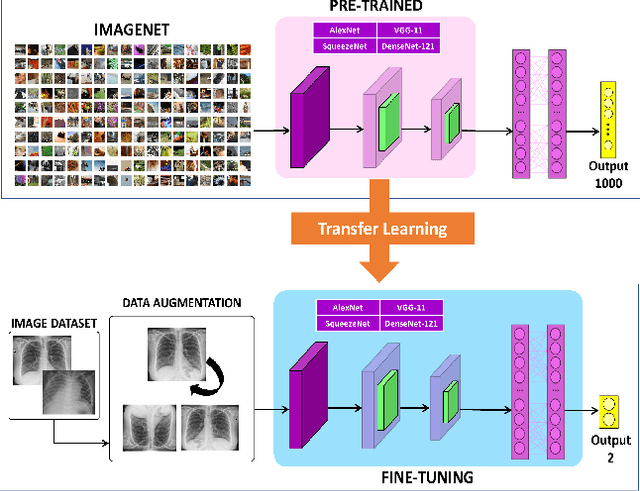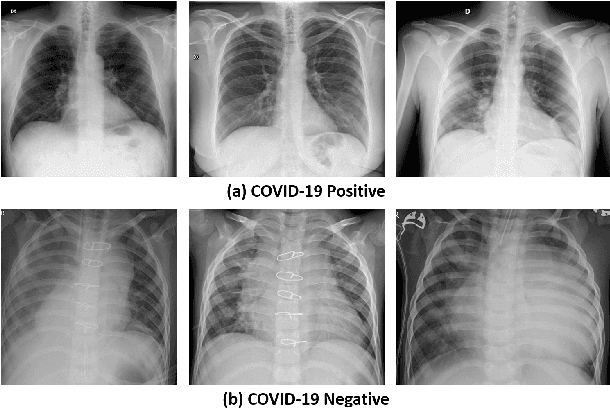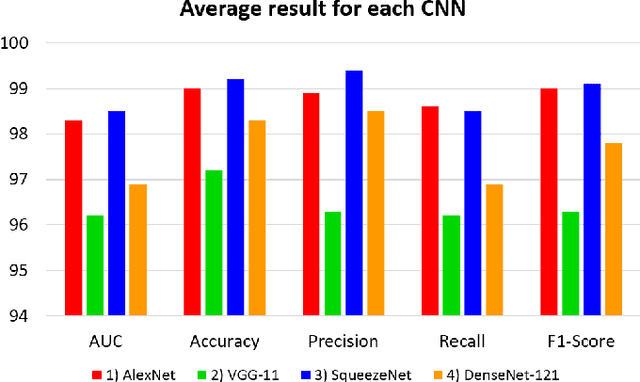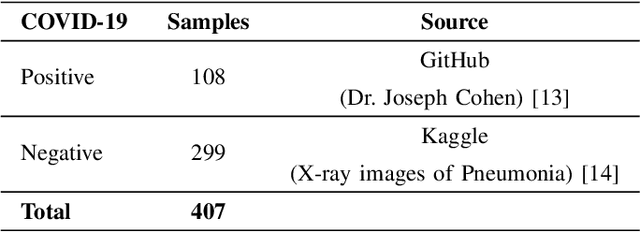Larissa Ferreira Rodrigues
Evaluating Convolutional Neural Networks for COVID-19 classification in chest X-ray images
Dec 26, 2024



Abstract:Coronavirus Disease 2019 (COVID-19) pandemic rapidly spread globally, impacting the lives of billions of people. The effective screening of infected patients is a critical step to struggle with COVID-19, and treating the patients avoiding this quickly disease spread. The need for automated and scalable methods has increased due to the unavailability of accurate automated toolkits. Recent researches using chest X-ray images suggest they include relevant information about the COVID-19 virus. Hence, applying machine learning techniques combined with radiological imaging promises to identify this disease accurately. It is straightforward to collect these images once it is spreadly shared and analyzed in the world. This paper presents a method for automatic COVID-19 detection using chest Xray images through four convolutional neural networks, namely: AlexNet, VGG-11, SqueezeNet, and DenseNet-121. This method had been providing accurate diagnostics for positive or negative COVID-19 classification. We validate our experiments using a ten-fold cross-validation procedure over the training and test sets. Our findings include the shallow fine-tuning and data augmentation strategies that can assist in dealing with the low number of positive COVID-19 images publicly available. The accuracy for all CNNs is higher than 97.00%, and the SqueezeNet model achieved the best result with 99.20%.
* 6 pages
Improving the network traffic classification using the Packet Vision approach
Dec 26, 2024



Abstract:The network traffic classification allows improving the management, and the network services offer taking into account the kind of application. The future network architectures, mainly mobile networks, foresee intelligent mechanisms in their architectural frameworks to deliver application-aware network requirements. The potential of convolutional neural networks capabilities, widely exploited in several contexts, can be used in network traffic classification. Thus, it is necessary to develop methods based on the content of packets transforming it into a suitable input for CNN technologies. Hence, we implemented and evaluated the Packet Vision, a method capable of building images from packets raw-data, considering both header and payload. Our approach excels those found in state-of-the-art by delivering security and privacy by transforming the raw-data packet into images. Therefore, we built a dataset with four traffic classes evaluating the performance of three CNNs architectures: AlexNet, ResNet-18, and SqueezeNet. Experiments showcase the Packet Vision combined with CNNs applicability and suitability as a promising approach to deliver outstanding performance in classifying network traffic.
* 6 pages
 Add to Chrome
Add to Chrome Add to Firefox
Add to Firefox Add to Edge
Add to Edge